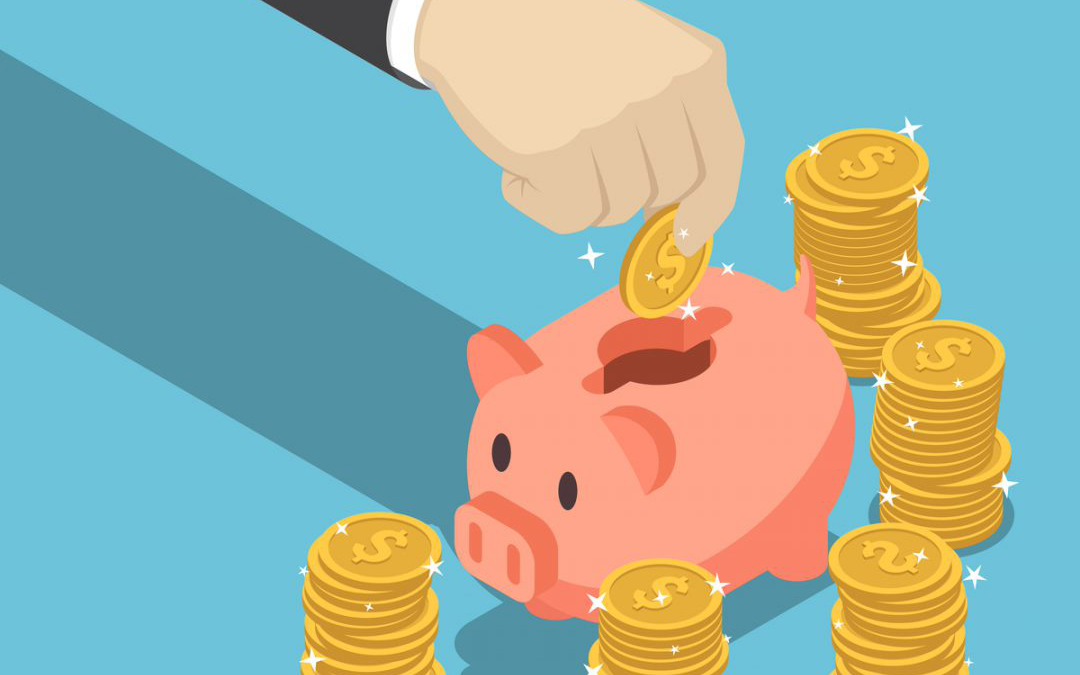Table of Contents
Saving money doesn’t always require huge lifestyle changes. In fact, pivoting your routine and spending habits, you could be meeting your savings goals in no time at all. Try these 10 crazy money saving hacks you can start doing today.
1. A Month of Money Tracking
Track your spending for an entire month. This may seem less of a saving hack and more of a chore, but a little tracking goes a long way. It’s a practice that Shannon McLay, founder of a Manhattan-based financial planning firm, makes almost all of her new clients do.
The results are hard to argue with.
In a New York Times interview, McLay says, “I’ve had clients save over $3,000 a month just from paying attention to where they’re spending their money.”
You might be thinking, “My goodness! Who knows how much spare change I could be saving right now just by writing things down?” If you want to try this hack, there are plenty of ways to track your month’s spending habits:
A Spending Notebook – Keep a small notebook in your purse, backpack, pocket, or wallet along with a golf pencil. Make a note of every item you purchase and its price.
A Purchase-Tracking Spreadsheet – Use a spreadsheet to type in information about your daily spending. Later, you can build a budget spreadsheet from your spending sheet.
Money Tracking Apps – You can link your credit and debit cards to a budgeting app to help you track your purchases . . . make sure to include those impulse purchases.

Money Saving Tip: Don’t want to wait a whole month for the benefits of this saving hack? Then pull out your bank statements and see where you’re spending all of your hard earned money. Calculate how much money you spend on essentials—utilities, rent, food, transport, gym membership—and how much you spend on non-essentials.
It might be a bit difficult, but you need to take a good look in the financial mirror to help scare yourself straight into savings. Once you’ve got your list, challenge every single purchase, expense, or withdrawal. Ask yourself, “Do I need to be spending $300 a month on artisan candles that smell like different baked goods?”
This wake-up call will help you be more aware of future purchases and help motivate you to save.
2. Now You See It. . . Now You’ve Saved It
Repeat this mantra: you can’t spend what you can’t see . . . you can’t spend what you can’t see. Set up automatic deposits to funnel into your savings account on the same days as your direct deposit or paycheck. Once your money is tucked away into a savings account, it’ll be safe and sound from any urge to make impulse purchases.
3. Go Cash-Only

Quit using your cards and start using cash for non-essential expenses. Credit cards and debit cards can sometimes trick the mind into thinking coffee, clothes, and restaurant outings only cost a swipe and a signature. But that illusion comes crashing down when the bank account statement shows up in the mail. Instead, leave the credit cards at home.
Withdraw enough cash to cover everyday expenses like groceries, gas, and a few non-essentials. Your mind will be forced to keep track of the money and automatically budget throughout the week.
Money Saving Tip: Worried about spending your cash all in one place? Try using the Moms Make Cents envelope method. Create envelopes for each type of expense, then, at the beginning of the month, divvy up your cash into the allotted envelopes according to your budget. You can even make envelopes for each week’s “fun” purchases for super fancy lattes, movie tickets, or drinks with friends.
4. The 3-Day Rule
Has this happened to you? You’re scrolling through social media when you see an ad pop up for something you desperately want (but don’t need). Instead of tapping your way into the checkout lane, save the link, but keep scrolling. Then, wait three days. Are you still thinking about that fantastic purse, high-tech water infuser, or tiara? If so, make the purchase (but check your budget first to see if you have enough money to afford the splurge).
Are you still buying up a storm after three days? Up the waiting period to one week, two weeks, or even a month. Chances are, the more time and distance you create from that “I want it! I must buy it!” impulse, the fewer things you’ll buy.
5. Make It Harder to Buy Things Online
Technology makes it way too easy to buy stuff, especially clothes. Between social media ads, email newsletters, and even text notifications, it’s hard to go a whole day without being tempted to make purchases on flash sale websites. Don’t let the machines control you anymore! Try these great tips to create spending blockades while increasing your savings:
Hit Unsubscribe – One of the ways e-commerce sites lure visitors into making a purchase is through email marketing campaigns. These emails often have time-sensitive promo codes that make you think you’ll be saving extra money, but only if you buy the product now.

Search “Unsubscribe” in your inbox to find all of your email marketing subscriptions and remove yourself from the lists of the non-essential e-commerce sites—but keep subscribed to the websites you use regularly. The trick is to limit non-essential spending, but keep yourself open to savings on the necessities.
No More Autosave – When you’re buying non-essentials online, avoid making an account on an e-commerce website. An account stores your credit card and debit card information, making it even easier for you to spend on things you probably don’t need. So when you’re on the checkout page, select “Check Out As Guest” instead of “Create an Account.”
Limit Social Media Time – It seems like yesterday you could scroll through your social media feed without being bombarded with ads. Today? Not so much. Targeted social media ads analyze your search history and demographic information to show you things you will likely buy.
Some social media apps like Facebook will let you turn off ad targeting just by going into your account settings. You can also limit your screen time, thereby reducing your exposure to the temptation of targeted ads that could otherwise interfere with your savings goal.
6. Drink More Water
A health tip and one of the best money saving hacks, drinking more water is all around a great idea. Swap soda, juice, or coffee shop lattes for water whether you’re eating out or eating at home. A family of six can save anywhere from $12-$20 a meal just by switching from soda to water. Now that’s a refreshingly better deal.
Money Saving Tip: Infuse a pitcher of filtered tap water with frozen fruits, herbs, or even veggies to transform your bland beverage into a replenishing elixir. Switch out the water every few days for new flavors.
Your best bet is to buy your favorite infusion ingredients in bulk, slice them, then store them in the freezer for a delicious and cost-effective solution to zest up your hydration practice. Try these flavors to juice up your water and your savings:
- Lemons
- Cucumbers
- Grapefruit
- Pineapple
- Mint leaves
- Oranges
- Limes
- Strawberries
7. Smarter Meal Planning, Better Savings
Not only is meal planning great for your health, but it’s also amazing for your bank account. Spend a few minutes a week planning out your breakfasts, lunches, snacks, desserts, and dinners. From there, you can create a grocery shopping list that ensures you only buy the things you use, and not waste money on ingredients that will go bad in the fridge.
Money Saving Tip: Keep your meal plans simple so you can buy whatever is on sale. For example, if you’ve planned to make a soup for dinner one night, you don’t need much more than meat, vegetables, broth, and possibly some grain. When you’re at the store, you’ll have the flexibility to buy whatever is on sale and cost-effective—it’s a culinary adventure and a money saving hack, almost like a financially savvy episode of Chopped!
8. Pay Lower Interest Rates
One of the easiest ways to save money just requires a quick call with your bank. Your credit card interest payment is extra money you could be saving. Call your bank and see what kinds of interest rates they could offer, and don’t be afraid to shop around for lower offers.
9. Have Fun (For Free)
A weekend of restaurant dates, happy hours, and brunches can wrack up quite a bill. Instead, try planning activities that don’t require you to open up your wallet. Here are some options:
Book, Movie, or TV Show Clubs – Join (or start your own) club to talk about film, TV, or books.
Potlucks – Invite your friends over for a potluck and get ready to enjoy their culinary skills (or tease them for their lack thereof).
Fun in the Great Outdoors – Having fun in nature is free! Call a friend to join you in an outdoor activity like laying in the sun, playing Frisbee, enjoying a picnic, or even just taking your dog to a dog park.
10. Shop Smarter Online with RebateKey
Have you ever wished you could be paid to shop? Make that dream a reality while shopping at RebateKey. RebateKey offers more significant discounts on products than any other deal site and sends you rebates for almost every purchase. Yup, it is like you’re getting paid to shop. Try our free Chrome extension to save even more money while you shop online.
Save Smarter, Not Harder with These Best Money Saving Hacks
Whether you’re saving money for an emergency, a vacation, or a new house, there are little things you can do every day to help beef up your savings. By making just a few of these money saving hacks a habit, you can save towards your dreams and feel confident in your financial future.
RebateKey is Valhalla for every wise money-savvy saver. From exclusive discounts to rebates for top-selling brands, RebateKey can be the life-changing money saving hack you didn’t know you needed.
Sources:
The New York Times. What I Learned From Tracking My Spending For A Month. https://www.nytimes.com/2018/11/28/smarter-living/budget-money-lessons.html
NerdWallet. The 7 Best Budget Apps for 2020. https://www.nerdwallet.com/blog/finance/budgeting-saving-tools/
Moms Make Cents. How to Start The Cash Envelope System and Save Your Money. https://momsmakecents.com/cash-envelope-system/
Wired. How To Block Targeted Advertising on Facebook, Google, Instagram and Twitter. https://www.wired.co.uk/article/how-to-block-ad-tracking-facebook-instagram-twitter-google
LifeHack. 20 Mini Money Hacks To Save You A Lot. https://www.wired.co.uk/article/how-to-block-ad-tracking-facebook-instagram-twitter-google
The Balance. 10 Money Saving Hacks to Help You Reach Your Financial Goals. https://www.thebalance.com/money-saving-hacks-4129351





